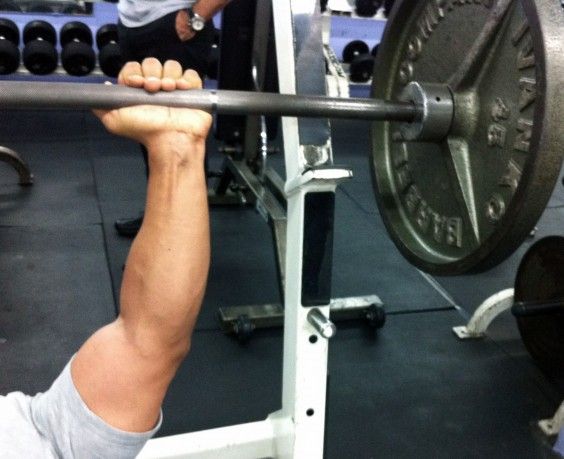Pectoralis major and minor, or pecs for short; padder of celebratory chest bumps, displayer of ironic T-shirts and powerhouse behind really aggressive hugs. Whatever the name or task, a stronger chest may do the job better. The push-up and the bench press are two exercises that provide different kinds of chest workouts.
Plate Weight Vs. Bodyweight — Why It Matters
Strong chest muscles are important not only for sport performance, but also for daily activities like pushing a shopping cart. (Those Brussels sprouts can get heavy!) Developing the chest muscles with push-ups and bench presses can also help improve posture.
The push-up can be a good starting point before moving on to bench pressing. It targets the pectoral muscles, triceps, and shoulders, demands core strength, and involves other muscles like the lower trapezius and the serratus anterior (try repeating that phrase ten times!) as stabilizersScapular muscle activity from selected strengthening exercises performed at low and high intensity. Andersen CH, Zebis MK, Saervoll C, et al. National Research Centre for the Working Environment, Copenhagen. Journal of Strength and Conditioning Research 2011.. The push-up can benefit nearly everyone, regardless of experience, gender, or goals (except astronauts, what with gravity and all). Those who can’t yet do standard push-ups can try the easier bent-knee variety. And for the more advanced folk, push-up variations like the one-leg and one-arm styles can make the movement more challenging.
The bench press involves the pectoral muscles, triceps, and shoulders. The exercise requires more equipment than the push-up— at the very least, a bench, a barbell, weight plates, and hopefully a trustworthy spotter. And bench pressers need to already be pretty strong, since the Olympic barbells typically found at bench-pressing stations weigh 45 pounds, although it’s possible to swap them for lighter ones.
You Push Some, You Press Some – The Answer/Debate
Weight-based exercises like the bench press may be a better option for building strength than bodyweight exercises like the push-up. Research suggests even the more difficult push-up variations are not as effective at building strength as bench pressingWeight and plyometric training: effects on eccentric and concentric force production. Wilson GJ, Murphy AJ, Giorgi A. Centre for Exercise Science and Sport Management, Southern Cross University, Lismore NSW, Australia. Canadian Journal of Applied Physiology 1996 Aug;21(4):301-15.. At the same time, some fitness experts question the bench press’s safety. Shoulder injuries from bench pressing are common enough to have earned the nickname “bench-presser’s shoulder”The “bench-presser’s shoulder”: an overuse insertional tendinopathy of the pectoralis minor muscle.Bhatia DN, de Beer JF, van Rooyen KS, et al. Cape Shoulder Institute, Medgroup Anlin House, Cape Town, South Africa. British Journal of Sports Medicine 2007 Aug;41(8):e11. Epub 2006 Nov 30.. Very heavy (emphasis on the “very”) bench-pressers can also risk tearing a pectoral muscle, an injury that can take almost nine months to healPectoralis major muscle injuries: evaluation and management. Petilon J, Carr DR, Sekiya JK, et al. Naval Medical Center Portsmouth, Portsmouth, VA. The Journal of the American Academy of Orthopaedic Surgeons. 2005 Jan-Feb;13(1):59-68.Injuries to the pectoralis major muscle: diagnosis and management. Provencher MT, Handfield K, Boniquit NT, et al. Department of Orthopaedic Surgery, Naval Medical Center San Diego, CA. The American Journal of Sports Medicine. 2010 Aug;38(8):1693-705.. Because of these potential risks, absolute beginners should try push-ups before they go under the bar. These beginners can increase the push-up’s difficulty until they’re strong enough to add bench pressing to their workout routine.
On the other hand, or wrist, push-ups can potentially cause wrist pain and other issues, so make sure to practice proper form. The hands should be directly under the shoulders, and the head should be aligned with the spine.
Some find it helpful to bench press and do push-ups, while others stick to just one exercise. To determine which exercise is most appropriate, it’s important to consider individual experience and goals. For anyone looking to develop a big chest, eventually the bench press will probably prove a valuable toolWeight and plyometric training: effects on eccentric and concentric force production. Wilson GJ, Murphy AJ, Giorgi A. Centre for Exercise Science & Sport Management, Southern Cross University, Lismore NSW, Australia. Canadian Journal of Applied Physiology. 1996 Aug;21(4):301-15.. But push-ups can supplement other chest work by shoring up weak spots and helping to prevent injury. Research also suggests people who add push-ups to a resistance training routine bench more weight than those who focus on benching aloneThe effects of combined ballistic and heavy resistance training on maximal lower- and upper-body strength in recreationally trained men. Mangine GT, Ratamess NA, Hoffman JR, et al. Department of Health and Exercise Science, The College of New Jersey, Ewing, New Jersey. Journal of Strength and Conditioning Research. 2008 Jan;22(1):132-9.. Looking to build a really impressive chest? That might require more science than exercise…
Photo by David Butler

